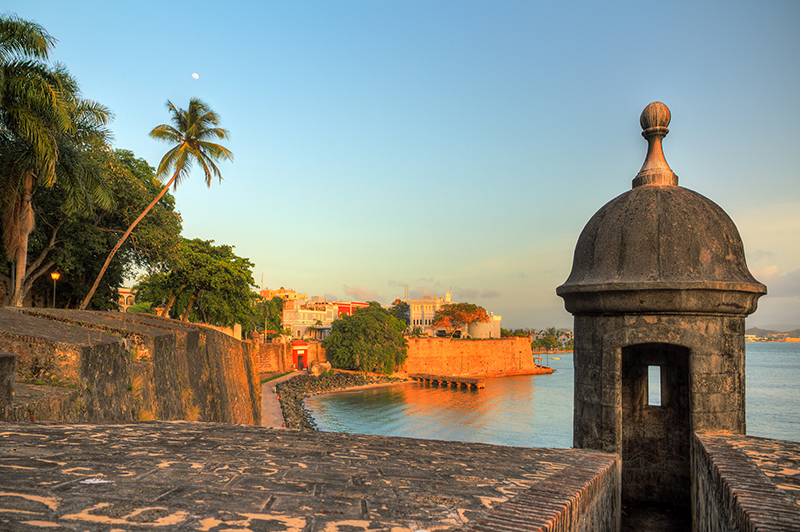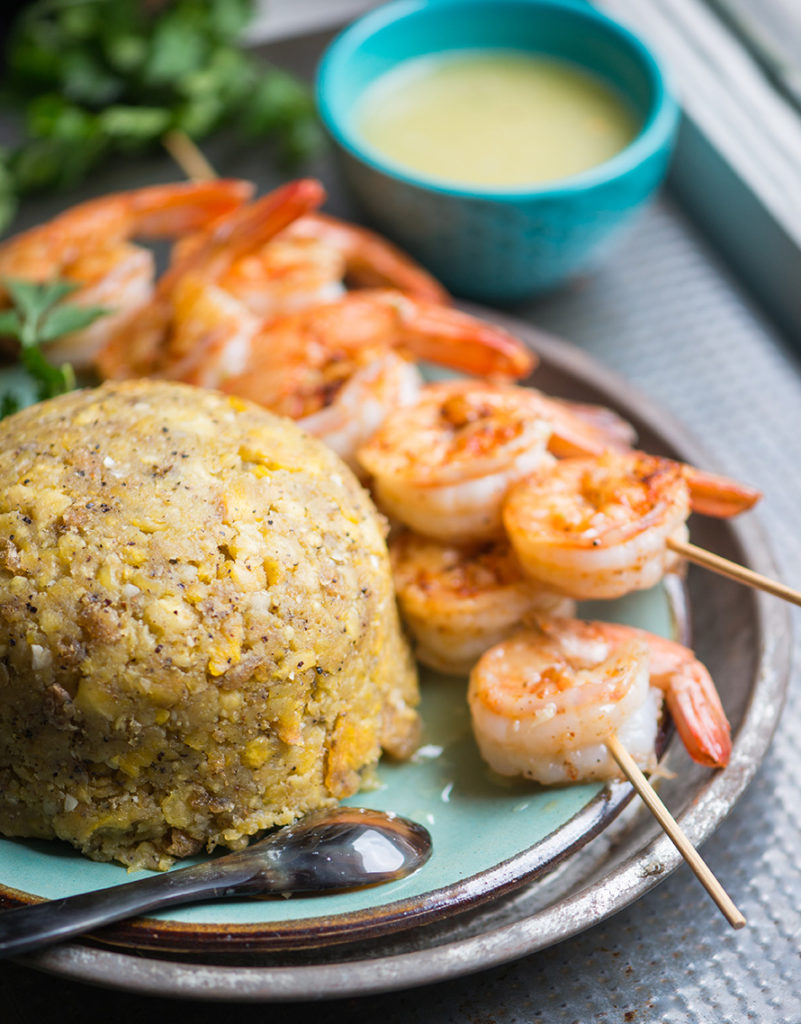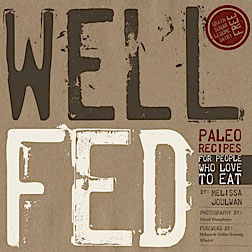I can hold two conflicting thoughts with equal conviction, and I have no problem with that whatsoever. For example: I generally like people who are...
Read MoreMofongo with Garlic Sauce (Paleo, Whole30)
In each issue of Paleo Magazine, I team up with Steph Gaudreau to share the history of a traditional recipe and adapt it to fit into a healthier paleo lifestyle. (I write the words; she makes the gorgeous photos.) In this column, we pay tribute to Puerto Rico with a dish that’s as much fun to say as it is to eat.
IMPORTANT NOTE: Google is matching donations—dollar for dollar, up to $2 million—to two excellent organizations to provide aid in Puerto Rico: Mercy Corp and Hispanic Corporation. Donate here.

Plantains and Chicarrones
Bordered by the sparkling Caribbean Sea and burly Atlantic Ocean, Puerto Rico is a jewel box island of mountains, waterfalls, and tropical rainforest. Words like lush, sultry, and balmy are murmured wistfully to describe the island and its culture
And the food!
Dishes like pernil (roasted pork shoulder), pasteles (Puerto Rican tamales), asopao (a sort of gumbo), arroz con gandules (yellow rice with pigeon peas), tembleque (coconut pudding), jamón con piña (ham with pineapple), and serenata de bacalao (salted cod salad).
Sadly, like most cross-cultural cuisines, the deliciousness of Puerto Rican food has a dark side. Puerto Rico was colonized by the Spanish conquistadors in the early sixteenth century and when the Spaniards had exhausted the local population, they imported slaves from West Africa.
The African influence contributed coconuts, coffee, tamarind, yams, sesame seeds, pigeon peas, bananas, and the technique for deep-frying food. The Europeans brought ingredients like black pepper, onions, garlic, cilantro, citrus, and olives, all of which made their way into another definitive Puerto Rican dish, picadillo: ground meat simmered with olives, raisins, and spices.
But it’s mofongo—a.k.a., Puerto Rico’s unofficial national dish—that inspires the deepest affection.
At its most basic, mofongo is a side dish made from cooked plantains, crushed chicharrones (or crumbled bacon) garlic, salt, and oil. These rustic, aromatic ingredients come together to form a mash with the texture of American bread stuffing and the seductive taste of the tropics. As with traditional dishes the world over, mofongo doesn’t suffer from a little addition of this and that. Popular variations include swapping yucca root for the plantains or boldly combining both green (savory) and ripe (sweet) plantains for a more complex flavor. Some recipes also include the Puerto Rican kitchen staple sofrito, a pesto-like blend of onion, green bell pepper, garlic, and cilantro.
Whichever variations you try, the goal is to cook the plantain (or other starch) so it’s slightly crispy on the outside with a dense, chewy inside. When the plantains are mashed, the crispy texture is broken up and distributed throughout the mofongo for a texture with occasional surprises on the tongue. Chewy, salty, crispy, garlicky, and luscious with healthy fats, mofongo is greater than the sum of its simple parts.
Imagine an epic dinner fiesta. It’s nearly impossible to separate the food from the soundtrack that gets the festivities moving. In Puerto Rico, that music is plena—Puerto Rican folk music that’s heavy on percussion and social commentary. Mofongo is so beloved, it was celebrated in a plena song called “Mofongo Pelao” by Ismael Rivera, a popular musician known as “El Sonoero Mayor.” Listen to the song while you prep your Mofongo and dance around your kitchen!
In a traditional Puerto Rican mofongo recipe, the plantains are deep-fried before they’re smashed with garlic and a generous amount of additional fat. To increase the nutrition of the dish without losing the luxuriousness of the fat, our recipe uses a Cuban-influenced approach: The plantains are boiled first, then quickly sautéed in a small amount of healthy fat before they’re mashed with more fat for flavor.
Although purists use a mortar and pestle to mash their mofongo, this version can easily be prepared in a mixing bowl with a potato masher, or in an electric mixer fitted with the flat paddle. Be sure to mash gently so the plantains retain some texture and the whole mixture holds together with the consistency of Thanksgiving stuffing.

Paleo Mofongo with Garlic Sauce
Serves 4-6 | Prep 10 minutes | Cook 20 minutes
Ingredients:
Mofongo
4 green (very green) plantains
1 tablespoon salt
4 teaspoons cooking fat (coconut oil, pastured lard), plus more for mixing
4 cloves garlic
4 ounces pork rinds
Garlic Sauce
2 cloves garlic
1/3 cup light-tasting olive or avocado oil
1 scallion
juice of 1/2 lime
1/4 teaspoon whole cumin seeds
1/4 teaspoon red pepper flakes
1/4 teaspoon salt
Directions:
Boil the plantains. Peel the plantains and cut them into 1/4-inch thick coins. Place in a saucepan, cover them with cold water, add salt, bring to a boil, and then reduce heat to simmer. Cook until a fork easily slides in and out when you poke a piece of plantain, about 10-15 minutes.
Prep the flavorings. While the plantains simmer, peel and crush the garlic and place in a mixing bowl. Place the pork rinds in a large ziplock bag and crush with a rolling pin or the bottom of a ramekin to make pork dust. Add to the mixing bowl.
Make the garlic sauce. Place all the ingredients in a food processor and purée, or combine them in 1-pint Mason jar and whirl with a stick blender.
Sauté the plantains. When the plantains are tender, drain them and set aside. Place 4 teaspoons cooking fat in a large, non-stick skillet over medium-high heat, 2 minutes. Add the plantains and sauté, tossing occasionally with two wooden spoons, until they’re yellow color deepens, but don’t let them brown. When they’re a darker, golden yellow, transfer them to the mixing bowl, along with any fat remaining in the pan.
Mix the mofongo. With a potato masher or an electric mixer set on medium, gently mash the plantains and pork rinds together. You want some bumpy texture, rather than a smooth paste. Add about additional fat, 1 teaspoon at a time, to help the mofongo stick together; it shouldn’t be dry. Taste and add more salt, if necessary. Using moistened hands, form into 3-inch balls or mound on a plate; serve warm.
Serve mofongo the traditional way—alongside roasted pork or chicken, or grilled shrimp or chicken—and drizzled with Garlic Sauce. Or try it with Steph’s Pork Chile Verde or Mel’s Cuban Meatballs.
Still hungry? Try these
For me, watching America's Test Kitchen and reading Cook's Illustrated are similar to flipping through a copy of Vogue and drooling over the fashions: I...
Read More




Omigosh, a paleo mofongo! One of my best friends is from Puerto Rico, and I have been to the island with him. One of the best meals I’ve had there was a rabbit mofongo. And lately I’ve been craving that bready stuffing texture – thanks for this one Mel! Making it this weekend for sure…
I hope you enjoy it!
Made this & your Latin American Chicken last night. Totally amazing! We’ve only had plantains once before, long ago, on some Caribbean island vacation-where everything tasted great—and to our pleasure, plantains taste great in our kitchen as well! If the plantains weren’t delicious enough, the chicken was even better. Lady, you make a darn good recipe! Thank you for deliciousness!
I love this story! So glad the plantains were just as delicious at home as on your Caribbean adventures. Thank you for letting me know you enjoyed the recipes!
Had never heard of mofongo. I was intrigued! I let the plantains ripen just a bit, boiled them about 10 min., then mashed them. Mixed them with crispy chopped bacon, crushed cracklings & garlic sauce. Then stuffed them in large pasta shells and baked them. Served them with your Latin Am. Chicken. Guests LOVED this tasty meal. Thanks for sharing!
I’m glad it was a hit!
As part of a walking tour of Old San Juan, we made Mofongo at a restaurant. I don’t know if they used the pork rinds, but we mashed up our plantains, garlic and butter, put it into a mold, and then the restaurant gave us some chicken to put in the middle. A very fun and memorable experience. They had us use a mortar and pestle for our mashing. Also, love the photo of the view from the old fort.
I would love to have a pro show me how to make it! There are so many recipes that I wish came along with a native grandma 🙂 That sounds like you had a really awesome experience.